Basecamp has gained popularity among teams for its straightforward approach to collaboration. And I have always admired how they run their company behind the scenes.
But having a great culture and having a great product are two separate things. So, is Basecamp a great product?
In this Basecamp review, I will explore its key features, usability, and how it compares to other tools in the market.
Whether you’re new to project management or looking for a better solution, this review will help you decide if Basecamp fits your needs.
Disclaimer: If you buy any products through links on this site, I may earn a commission. But it doesn't make any difference to your cost, and it helps me keep this blog running. So you could always read my articles for free.
What is Basecamp?
Basecamp is a cloud-based application to help teams manage projects and collaborate effectively. Created by 37signals, it addresses common challenges like scattered tasks and communication overload.
You can create dedicated project pages that include to-do lists, message boards, and file sharing. For example, during a recent project at my marketing firm, we used Basecamp to keep track of deadlines and share documents seamlessly.
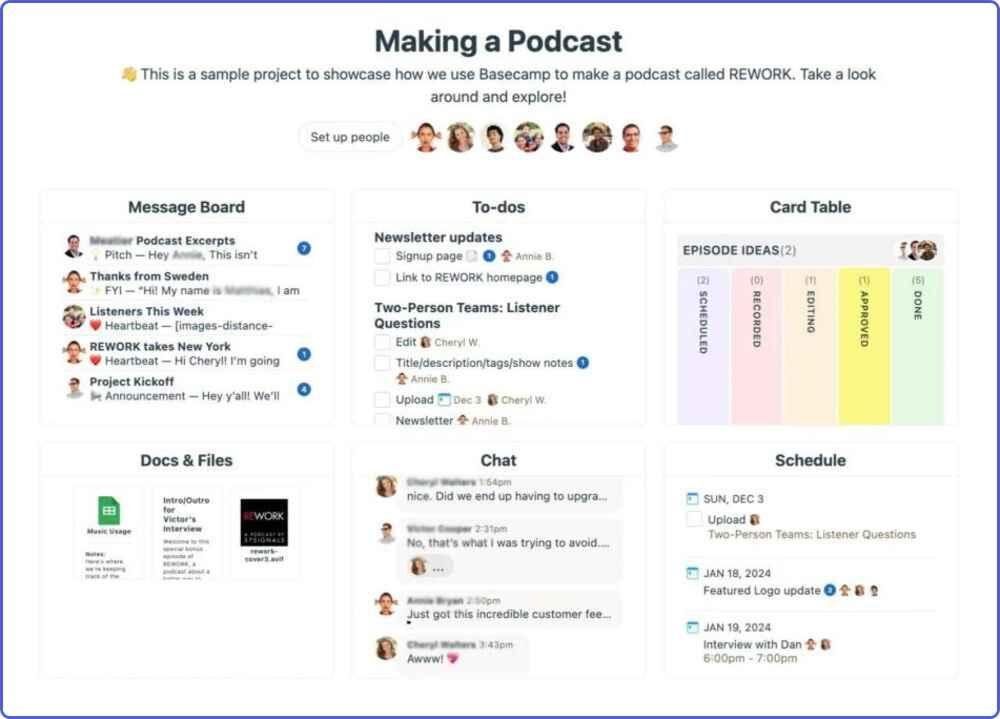
Its unique features, like Hill Charts, visually represent project progress, making it easy to see where you stand.
Whether you’re managing a small team or a larger organization, Basecamp offers practical solutions to streamline your workflow.
Next, in this Basecamp review, let’s take a look at its main capabilities.
Basecamp key features
With its user-friendly interface, Basecamp is suitable for both beginners and experienced users. Let’s dive into its key features that make it a popular choice for many teams.
To-do lists
To-do lists are central to Basecamp’s functionality. You can create multiple lists in Basecamp for different projects, breaking down tasks into manageable steps.
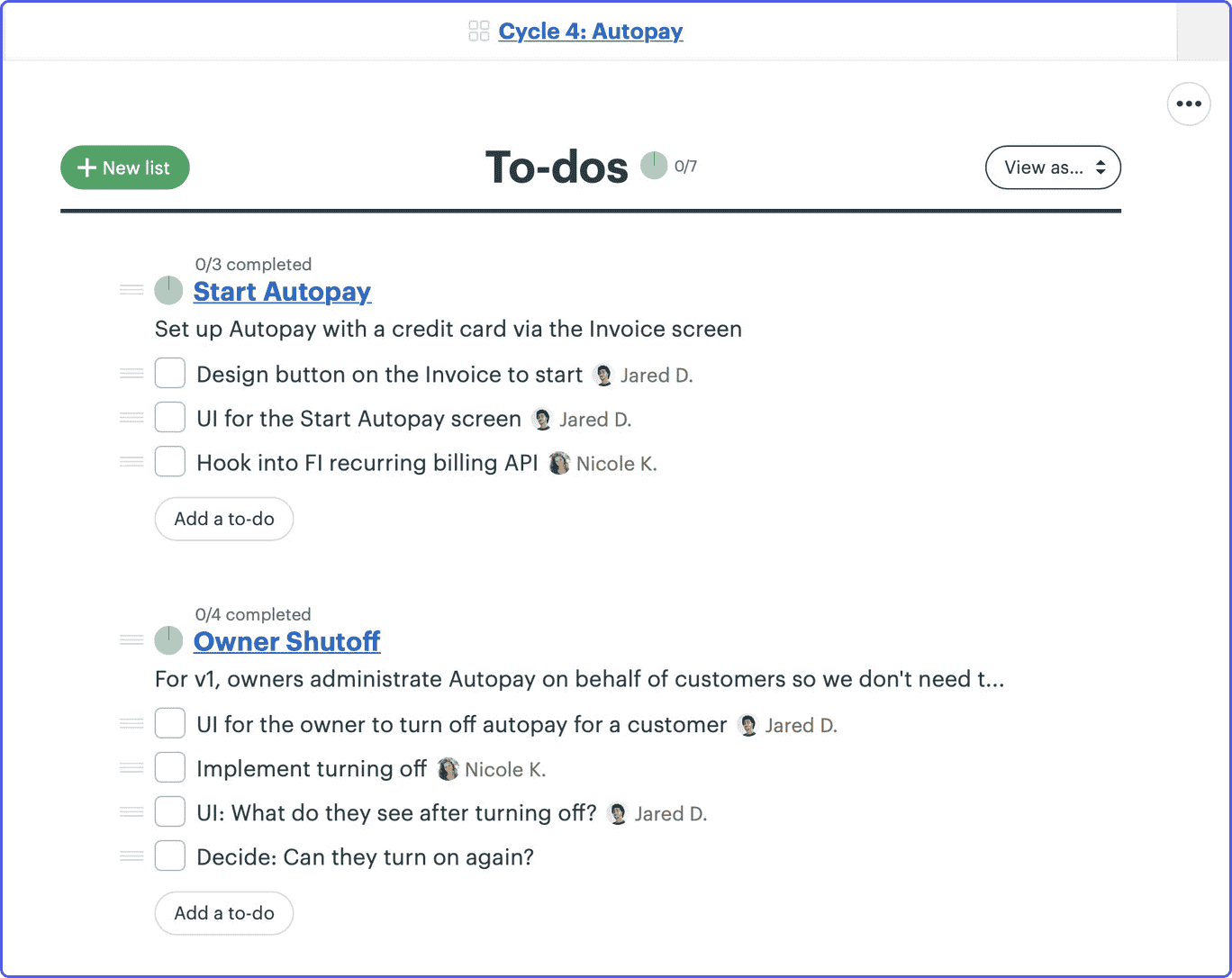
Each task can then be assigned to team members, complete with due dates and comments. You can even set recurring tasks for regular activities like weekly meetings or monthly reports.
Message boards
Basecamp’s message boards serve as a central hub for team discussions. Unlike traditional emails, these boards keep all conversations organized by topic.
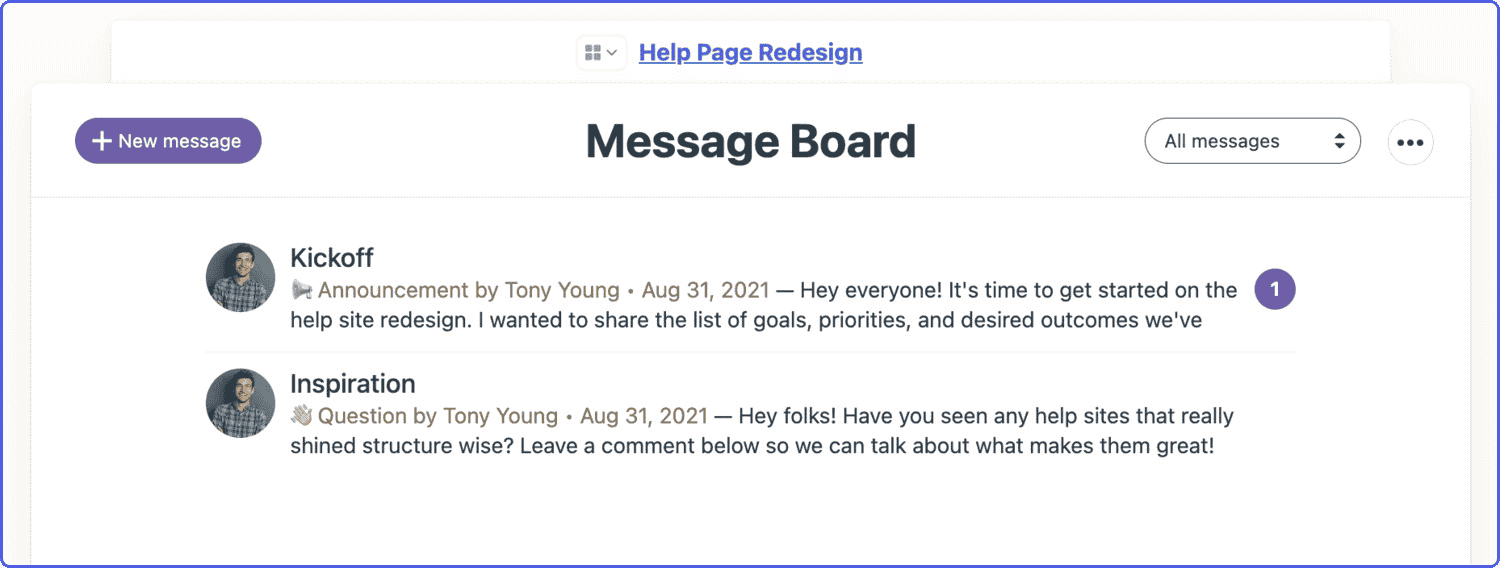
You can post announcements, share ideas, or provide project updates in one place. For example, you can use the message board to announce a major project milestone, allowing everyone to celebrate the achievement together.
You can also categorize messages and control who gets notified about new posts, ensuring that important information reaches the right people.
Real-time group chat
Communication is key in any project, and no Basecamp review is complete without discussing this aspect. Basecamp offers real-time group chat features called Campfires. This allows you to have quick discussions without leaving the platform.
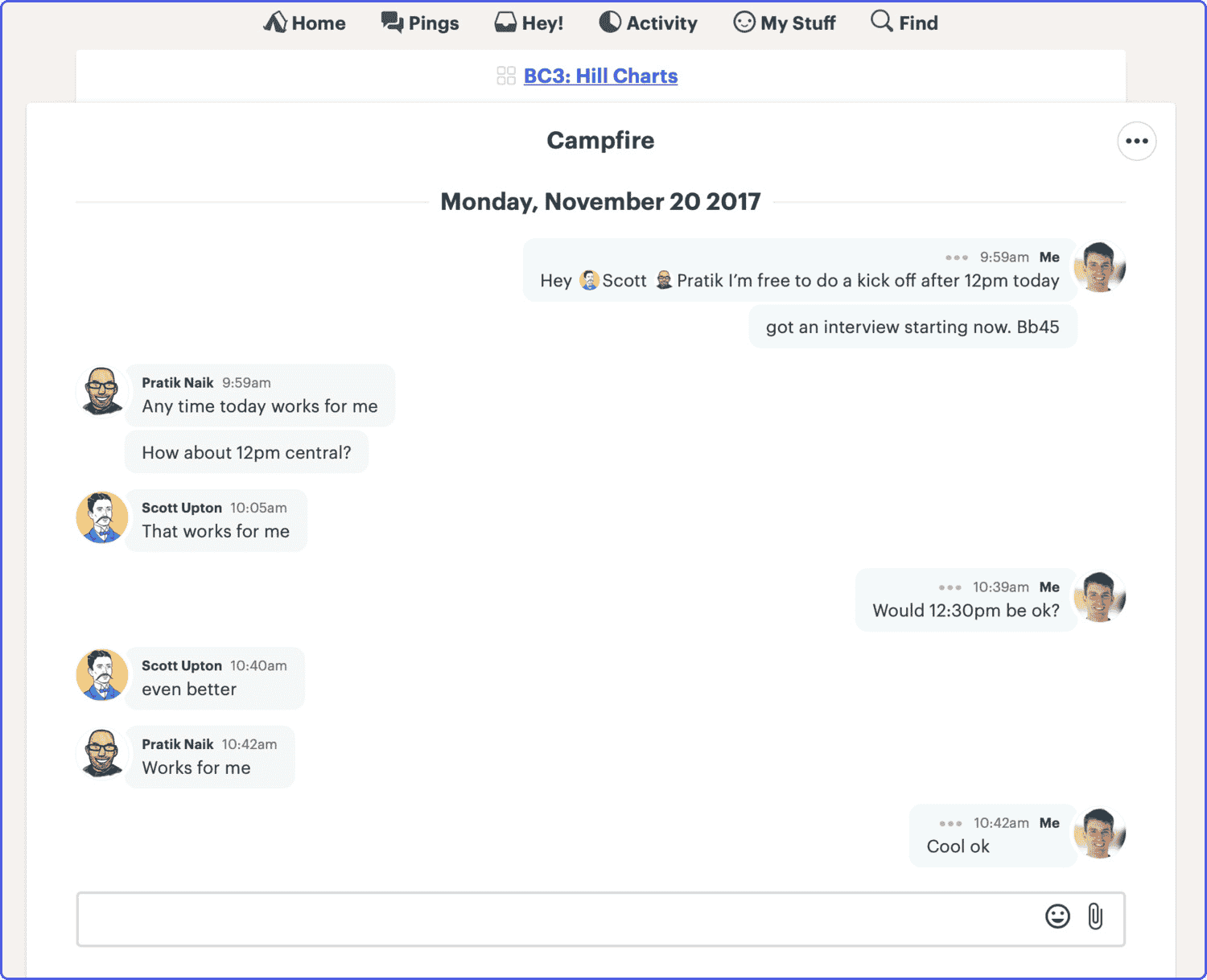
With Campfires, you can ask questions and get immediate responses from your team members. You can enhance your chats with emojis, file attachments, and even code snippets, making conversations more engaging.
Check-in questions
Basecamp’s check-in feature allows project managers to ask their teams regular questions about progress or challenges. This creates a structured way to gather updates without lengthy meetings.

For example, you can implement weekly check-ins during a product launch. The responses are compiled into an easy-to-read thread, helping you identify bottlenecks quickly.
You can also comment on individual answers, fostering a collaborative atmosphere.
Hill charts
One of Basecamp’s unique features is the Hill Chart, which visually represents project progress. It divides tasks into two phases: uphill (planning) and downhill (execution).

As you update your progress by dragging tasks along the chart, you gain insights into whether you’re on track to meet deadlines.
This feature helped my team visualize our workflow during a complex project last year. It eliminated the need for daily standups and kept everyone informed about our status.
Document and file storage
Another core aspect I want to discuss in the Basecamp review is storage. Basecamp provides a dedicated space for storing documents and files related to each project. You can upload images, PDFs, and other resources directly within the platform.
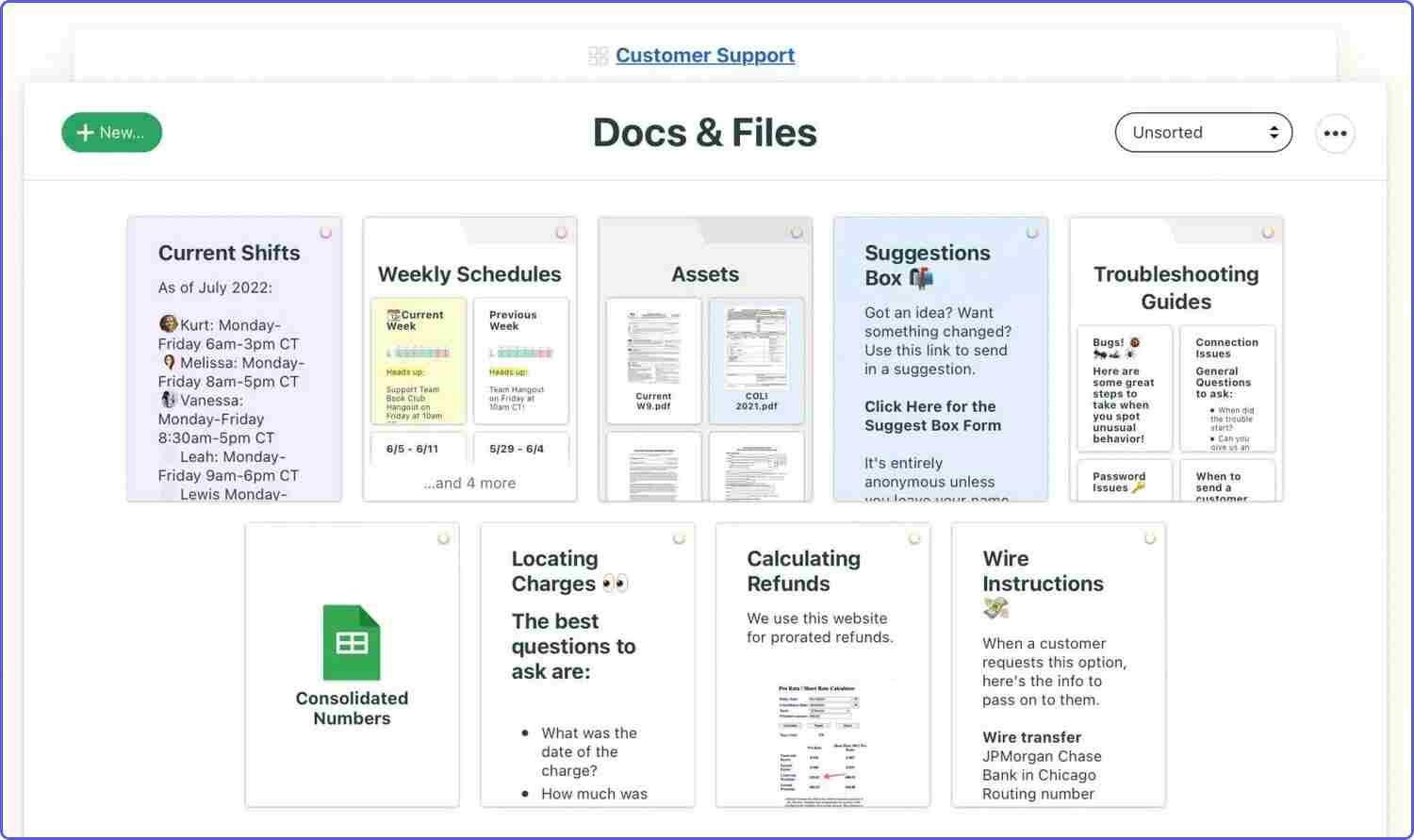
This centralizes important information and makes it easily accessible to all team members. For example, when working on a marketing campaign, you can store all your creative assets in Basecamp.
It can save you a great deal of time searching through emails or different folders on your computers.
Client access
If you work with clients regularly, Basecamp allows you to invite them into specific projects while keeping sensitive information private.

You can share relevant to-dos, messages, and files without overwhelming clients with unnecessary details.
Reports
Basecamp offers reporting features that provide quick insights into your project’s status. You can see overdue tasks, completed items, and upcoming deadlines at a glance.

For instance, I often use these reports during weekly reviews to assess our team’s performance and adjust priorities accordingly. This helps ensure that nothing falls through the cracks.
App integrations
Basecamp supports integrations with popular apps like Slack, Mailchimp, and Salesforce. With this flexibility, you can customize your workflow according to your team’s needs.

For example, integrating Slack helped streamline communication in one of my projects by sending notifications directly from Basecamp to our chat channels.
Powerful search functionality
Next, in this Basecamp review, let’s talk about the ease of finding what you need. Finding specific information in a busy project can be challenging; however, Basecamp’s powerful search feature makes it easy.
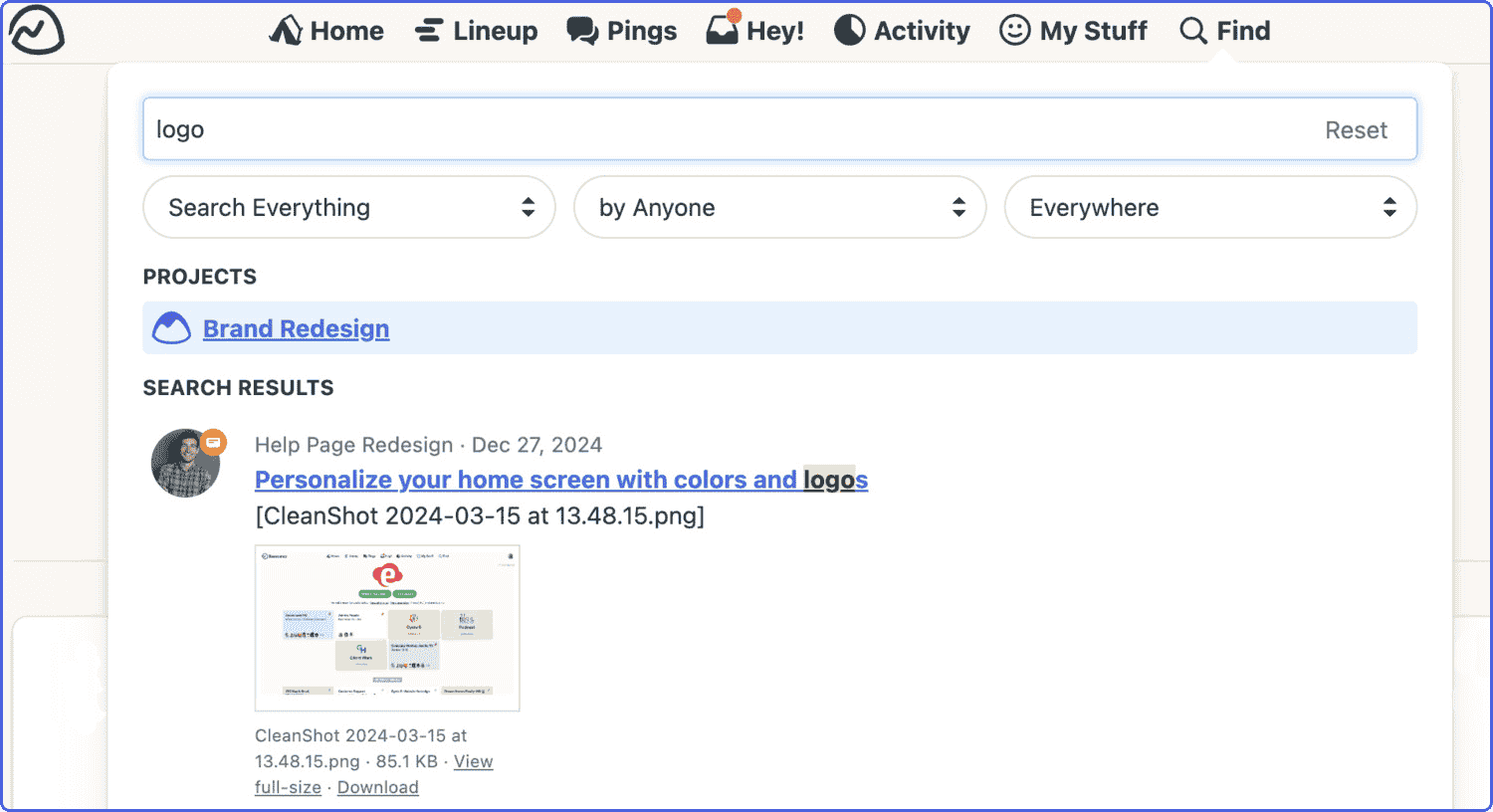
You can search by keywords or filter results based on projects or file types. During a hectic project phase, this feature could save you hours of scrolling through messages trying to locate important updates.
Event scheduling
Scheduling events like team meetings is straightforward in Basecamp. You can create calendar events that notify all project members simultaneously.
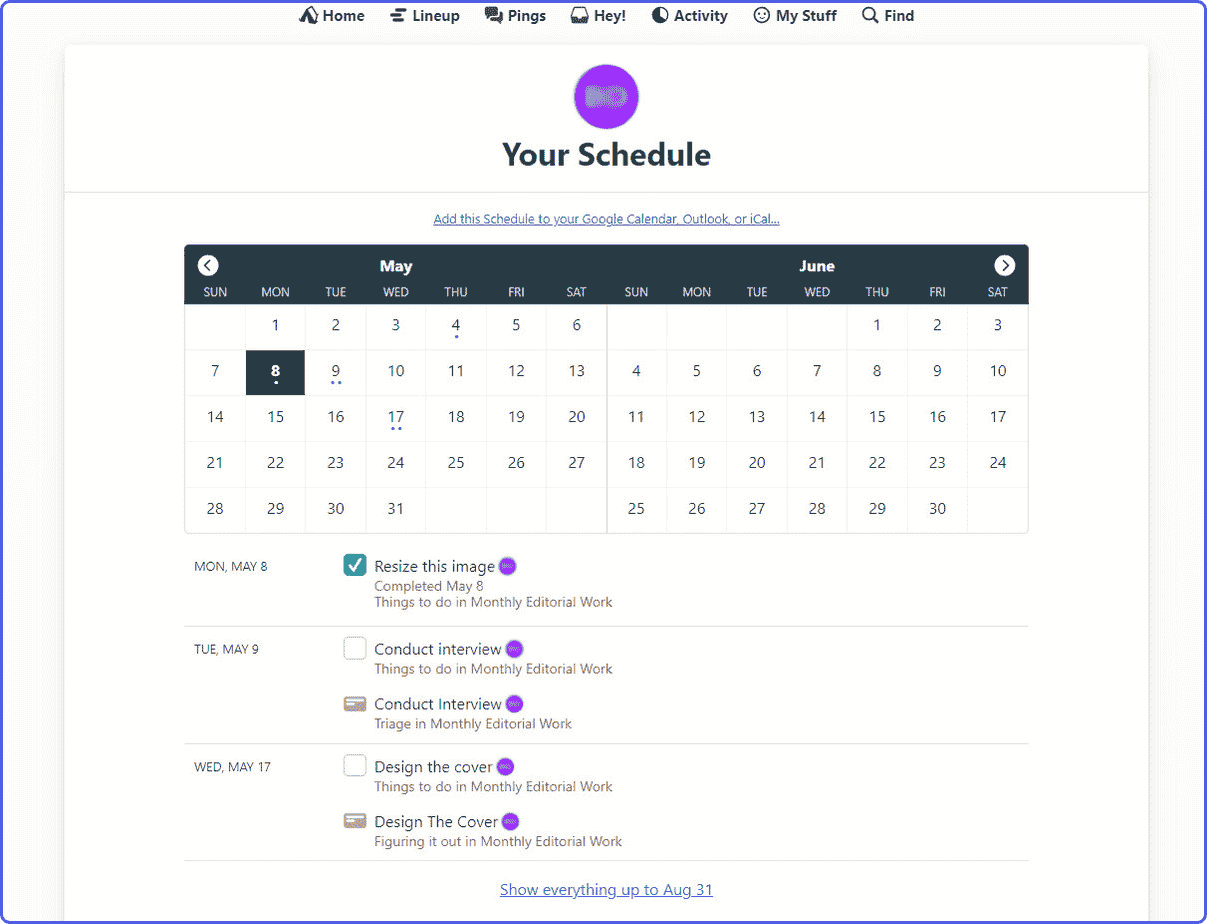
This keeps everyone on the same page regarding important dates without sending multiple emails or messages.
Basecamp pros and cons
Understanding the pros and cons of Basecamp can help you decide if it’s the right project management tool for your team. While it offers many advantages, there are also some limitations to consider in this Basecamp review.

Pros of Basecamp
User-friendly interface
Basecamp is known for its clean and intuitive design. As a beginner, you’ll find it easy to navigate. You can set up projects quickly without feeling overwhelmed.
Centralized communication
Basecamp combines chat, message boards, and file sharing in one platform. This keeps all project-related discussions organized.
Task management
The to-do lists in Basecamp allow you to assign tasks and set due dates. This feature helps you track progress effectively.
Client collaboration
You can invite clients to specific projects without exposing sensitive information. This feature is great for freelancers, agencies, or consultants.
Cons of Basecamp
Limited customization
One downside is the lack of advanced customization options. If your projects require complex workflows, you might find Basecamp somewhat restrictive.
For instance, it doesn’t support sub-tasks or task dependencies, which can be a drawback for intricate projects.
No real-time reporting
Basecamp lacks robust reporting tools. This makes it challenging to track project metrics accurately. I wish it had more detailed analytics to assess progress effectively.
Basecamp pricing
From my review of Basecamp, I like that it offers a straightforward pricing structure that caters to different team sizes and needs. Basecamp has two main plans: Basecamp Basic and Basecamp Pro Unlimited.
The Basic plan starts at $15 per user per month. This plan is ideal for small to medium-sized teams, allowing unlimited projects and essential collaboration tools.
For example, if you have a team of five, your monthly cost would be $75. Each user gets 500 GB of file storage, which is quite generous.
On the other hand, the Pro Unlimited plan is priced at $299 per month, regardless of how many users you have. This is a great option for larger teams.
If you have over 30 users, the cost breaks down to less than $10 per user, making it more economical. This plan includes enhanced storage of 5 TB, which is beneficial for teams dealing with large files.
Basecamp offers a 30-day free trial for both plans, allowing you to explore features without commitment. Additionally, they provide a 10% discount for nonprofits, making it accessible for various organizations.
Final verdict on Basecamp
Basecamp is a good choice for teams looking for a straightforward project management tool. Its user-friendly interface is easy to navigate, even for beginners.
You can efficiently manage tasks and collaborate with team members in one place. The flat pricing model is appealing, especially for larger teams, as it simplifies budgeting.
However, Basecamp has limitations. It lacks advanced features like Gantt charts and sub-task capabilities, which can hinder complex project management.
Additionally, some users find the absence of real-time reporting a drawback. While Basecamp excels in collaboration tools, it may not suit every team’s needs.
In summary, if you prioritize simplicity and effective communication, Basecamp is worth considering. For next-level features and advanced reporting, you may want to check out these alternatives.
Did I miss anything in this Basecamp review? Did you try Basecamp? Do you have any questions or comments? Share your thoughts below in the comments section.





